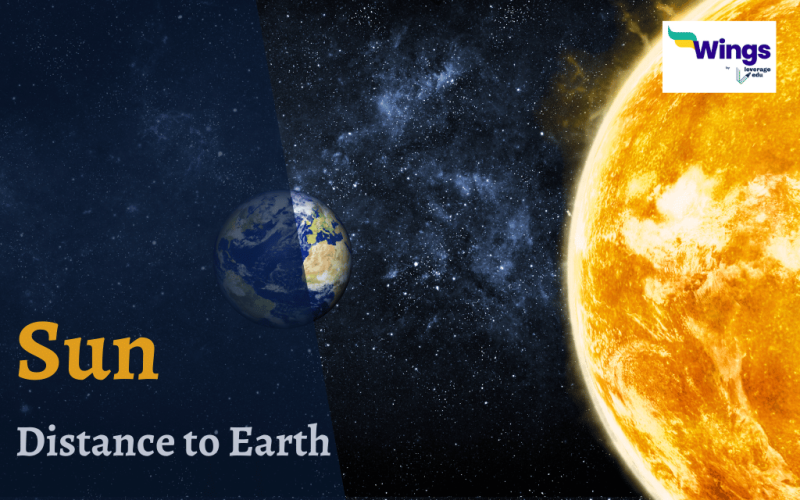With the scorching heat of summers in the Sahara, it feels like the sun is just overhead. On the contrary, the temperature on the poles feels like the sun is on a vacation to the nearby galaxy. However, these are just relative thoughts, the actual distance between the Sun and Earth is almost constant. And to be frank, it is so huge that the varying altitude of the earth at different points hardly affects it. Nevertheless, there might be other factors influencing this distance that we will discuss in this blog.
How Far is the Sun?
Table of Contents
Sun’s distance to Earth was first estimated by a Greek astronomer Aristarchus of Samos. He used the changing sizes of the moon during its various phases to calculate the distance of Earth from the sun and the moon.
Today, the sun’s distance to Earth is known to be 93 million miles or 150 million kilometres. This distance is also known as 1 Astronomical Unit. This standard distance is used by astronomers to calculate large distances between celestial bodies in vast space. It also eases the calculation process.
Also Read: The 7 Layers of the Sun: Features, Colour, Diagram & Structure
How Sun’s Distance to Earth Keep Changing?
The distance between the Earth and the Sun is not constant because of the elliptical orbit of the Earth. At certain points, it is the closest to the sun and at some points, it goes the farthest. Therefore, at different times of the year, the distance between Earth and the sun is different.
Earth’s orbit is the closest to the sun in January. The point of least distance between the two is called the Perihelion which is 91.4 million miles or 147.1 million km away from the sun. The inverse of Perihelion is the Aphelion which occurs early in July.
The distance between the two celestial bodies is maximum during Apehelion which is 93 million miles or 150 million km. However, this change in distance is not the reason for the change of seasons. Seasons are the phenomenon of Earth’s tilt on its axis and not the elliptical shape of its orbit.
Also Read: Will Aditya L1 Land on Sun?
Impact of Distance Between the Earth and the Sun
The first and foremost impact of this ideal distance from the sun is the possibility of life on Earth. At this distance, Earth’s magnetic field protects itself from the harmful radiations of the sun whereas also enough to keep it warm and provide energy for life to sprout.
Another impact of this distance is the gap in time. Suppose something hits the sun, we would know it 8 minutes and 20 seconds later, The sun rises and we know it 8 minutes and 20 seconds later. Basically, we are always 8 minutes and 20 seconds late!
This is because the light from the sun takes 8 minutes and 20 seconds to travel this distance to reach the Earth. If you see it that way, while looking at the sun, you are actually looking at how it was around 8 minutes before.
Well, that is thrilling, in fact, everything about space is thrilling. So, if you have a knack for space trivia do not forget to follow our blogs on Science and Technology stay tuned to our General Knowledge section for more interesting content.
 One app for all your study abroad needs
One app for all your study abroad needs













